Dorothy Counts became the first Black student at Harding High School in Charlotte, North Carolina on September 4, 1957, but she had to withdraw after just a week due to the vicious racism she faced.
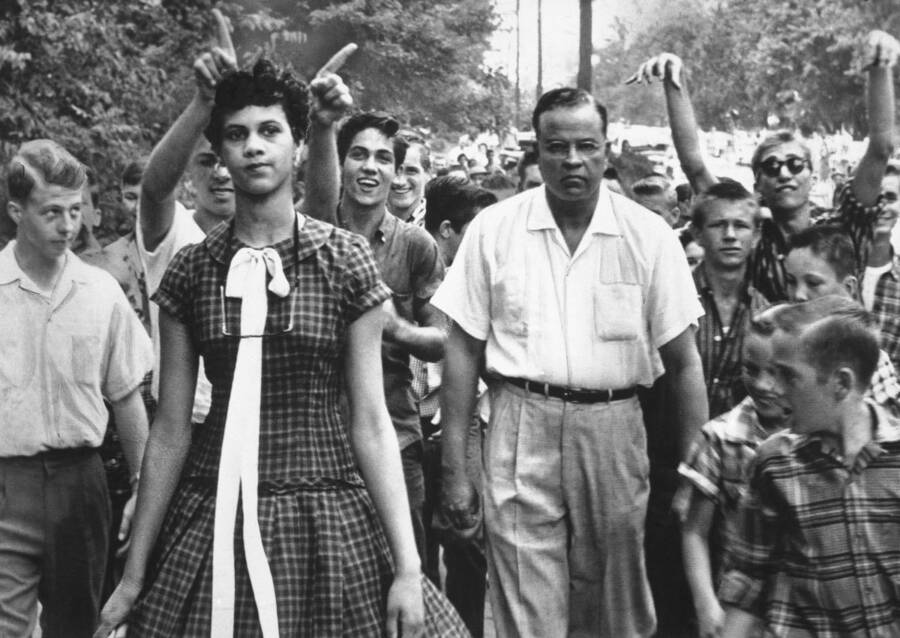
Public DomainDorothy Counts arriving at Harding High School on Sept. 4, 1957.
On a hot September day in 1957, a mob began to form outside Harry Harding High School in Charlotte, North Carolina. Spanning two city blocks, the men, women, and children in the crowd were awaiting the arrival of a Black teenage girl named Dorothy Counts. She was 15 years old, a sophomore, and about to arrive at her first day of school.
The mob was determined to prevent it.
When Counts arrived wearing a checkered dress and a long yellow bow, the people who thronged the streets began to jeer. They spat, threw stones, and hissed racial epithets. But Count was unbowed. Staring straight ahead, she walked into the school, her dress damp with spittle.
This is the story of Dorothy Counts, one of the brave Black teenagers who integrated Southern high schools in the 1950s.
‘We Deserved To Have The Same As Everybody Else’
Born on March 25, 1942, Dorothy Geraldine Counts grew up in Charlotte, North Carolina. Her father, Herman, was a Presbyterian minister and a professor at Johnson C. Smith University. Counts and her three brothers lived on campus and came of age in the university neighborhood.
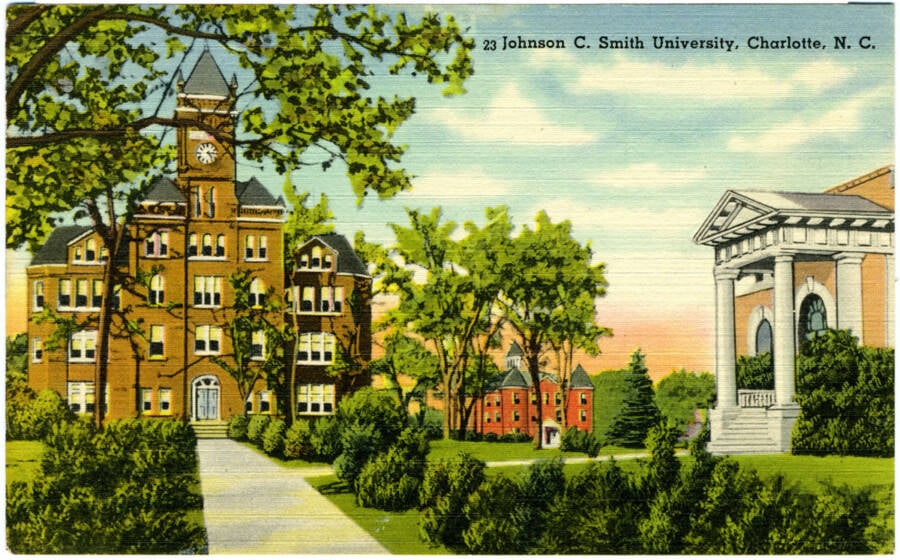
Public DomainJohnson C. Smith University, a historically Black university in Charlotte, where Dorothy Counts grew up.
Harry Harding High School was close by. But it was all-white, so Counts attended a different high school further away.
This changed in the 1950s. As Counts told WFAE-90.7, Charlotte’s NPR News Source, her father was part of a group that discussed civil rights issues of the day. After Brown v. Board of Education outlawed segregation in public schools in 1954, they began to discuss how they could bring integration to Charlotte.
The solution, the group decided, was to enroll their children in white public schools. After discussing it with his family, Dorothy Counts’ father applied for her and two of her brothers to attend white schools.
“The conversations around the table basically was around equality, what was morally right, and also the fact that we, at this point in our lives, we deserved to have the same as everybody else,” Counts recalled.
Only Dorothy Counts was accepted.
Though she had been largely sheltered from racism, Counts had had a formative encounter with a white girl while attending the National Youth Assembly at Grinnell College in Iowa in the summer of 1957. Upon her arrival, Counts’ white roommate couldn’t stop staring at her. When Counts asked if something was wrong, the girl admitted that she’d never seen a Black person before — and began to ask questions.
“She wanted to know if I had a tail,” Dorothy Counts recalled to Charlotte Magazine in 2017. “She wanted to know if my skin rubbed off. She kept looking at my hair. Finally I just said to her, ‘We need to sit down and talk about this because a lot of what you’ve heard are myths and are not true. Believe it or not, you and I are alike in a lot of ways.'”
The girls became friends. And Dorothy Counts was optimistic that she could befriend her new white classmates as well. But that’s not how things went.
Dorothy Counts Arrives At Harding High School

Charlotte Mecklenburg Library/The Charlotte ObserverHarry P. Harding High School in Charlotte, North Carolina. 1957.
On Sept. 4, 1957, Dorothy Counts prepared for her first day of school. She wore a red and yellow checkered dress with a bright yellow bow that her grandmother had made her. As her father drove her to Harding High School, accompanied by a family friend named Edwin Thompkins, Counts reflected on what her father had told her the night before: “Remember who you are; remember that you’re inferior to no one; remember that you can be anything you want to be; and don’t hold your head low for anybody.”
Herman Counts had been right to fortify his daughter. When they arrived at the school, they found a seething mob organized by the White Citizens’ Council waiting for them.
As he parked the car, Dorothy Counts began the long walk into the high school with Thompkins at her shoulder. The crowd began to jeer and spit. They threw rocks and stepped into her path. One woman shouted, “Spit on her, girls! Spit on her!” while someone else screamed, “Go home n—er!”
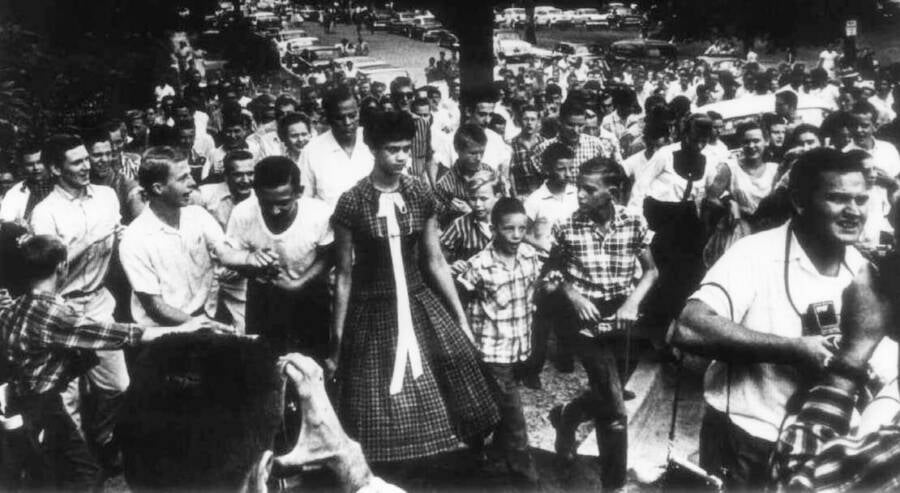
Charlotte Observer Image Collection, Courtesy of the RSCR, Charlotte Mecklenburg LibraryDorothy Counts arriving at Harding High School. Sept. 4, 1957.
“Hooting and screaming, the crowd swept toward her,” The New York Times reported the next day. “Someone fired a blank cartridge. Dr. Thompkins and Dorothy, a slender girl, disregarded the commotion. Looking straight ahead they walked to the school door with the crowd swirling about them.”
Inside the school, Counts’ fellow students tugged at her dress and pelted her with erasers. When she left at the end of the school day, the mob threw water and sticks at her as she walked to where her father was waiting in his car. The police did not intervene until the mob tried to start rocking the vehicle.
And yet, Dorothy Counts resolved to return.
Dorothy Counts’ Life After Integrating Harding High School
Though Dorothy Counts fell ill after her first day — missing class on Thursday and Friday — she returned to Harding High School on Monday. The mob had disappeared, but the hatred remained. As Charlotte Magazine reports, boys spat in her food during lunch on Tuesday, and on Wednesday morning, someone threw an eraser and “something sharp” at her back.
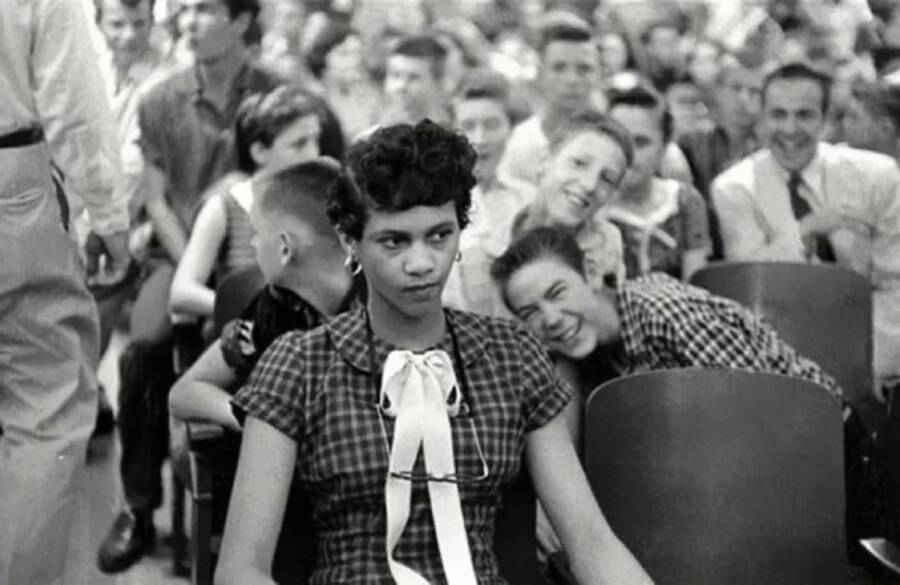
Robinson-Spangler Carolina Room/Charlotte Mecklenburg LibraryDorothy Counts at Harding High School, with jeering classmates behind her.
But the worst came that afternoon when Counts left campus to go home for lunch. Her brother was waiting for her with his car — which someone had pelted with rocks, shattering the back window. Later that night, Herman Counts decided to pull his daughter out of Harding High School. He stated: “I sent you to school to get an education.”
Dorothy Counts then attended an integrated school in Philadelphia. But her brave stance against segregation had caught the eye of the world. Writer and civil rights activist James Baldwin, who was living in Paris at the time, decided to return to the United States after seeing photos of Counts, stating: “Here was unutterable pride, tension and anguish in that girl’s face as she approached the halls of learning, with history jeering at her back. It made me furious. It filled me with both hatred and pity. And it made me ashamed. One of us should have been there with her.”
Counts went on to attend Johnson C. Smith University. She married, becoming Dot Counts-Scoggins, and began a career in childcare services, working closely with church-based centers that served low-income families. Counts also became involved in community-based activism and told her integration story countless times at events all across the country. She never forgot what had happened to her as a 15-year-old girl.
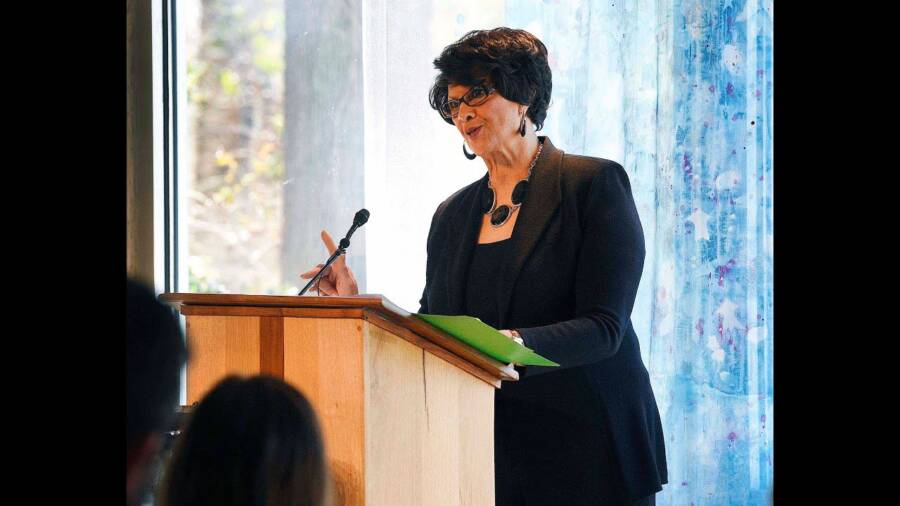
The Charlotte Observer/YouTubeDot Counts-Scoggins speaking. She’s told her story countless times across the country.
And neither did some of the people who’d jeered at her.
In 2006, Counts received an email from a man named Woody Cooper. He told her that he was one of the boys who had taunted her in 1957, and he wanted to apologize. They met for lunch, and when Cooper asked for Counts’ forgiveness, Counts told Cooper: “I forgave you a long time ago. This is opportunity for us to do something for our children and grandchildren.”
Sadly, Charlotte still struggles with segregation to this day. But Counts’ legacy casts a long shadow over the city. In 2010, Harding High School named its library after her, a gesture to show that, while there is still work to be done, Dorothy Counts’ brave stance had not been forgotten.
After reading about Dorothy Counts, take a look at these stunning photos from the civil rights movement. Or, discover the stories of civil rights leaders that you didn’t learn about in school.





